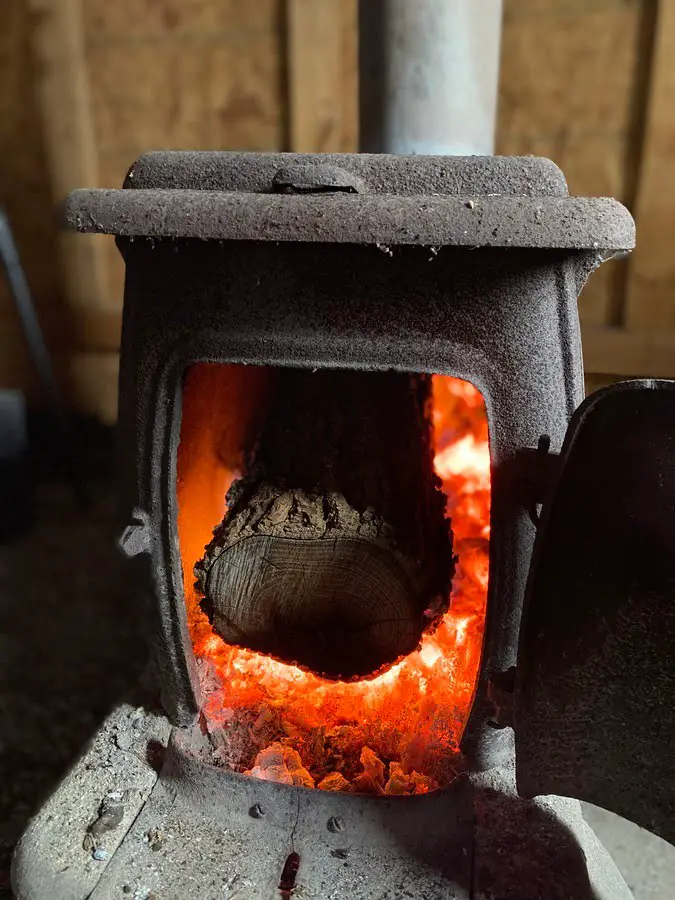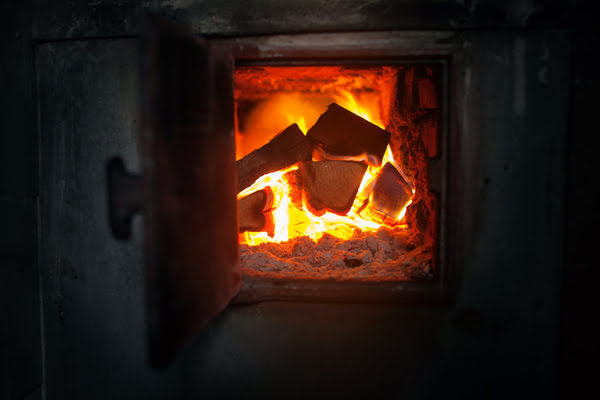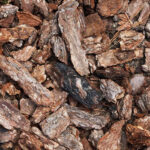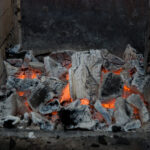Perhaps you’ve noticed your stove is not heating the room as well as it used to. Perhaps, even with the fire raging, you need a coat.
Maybe the wood seems to be burning faster than it used to, so what’s the problem?
In short, if you are experiencing these, your wood stove may have a leak. Let’s take a look at some ways to tell if your wood stove is leaking!
Table of Contents
- Use a Smoke Stick or a Draft Detector
- You See Smoke Leaking From the Stove
- Check the Stove’s Vents
- Clean Chimney Buildup if Your Stove Leaks
Use a Smoke Stick or a Draft Detector
The stove should only draw air from the vents or outside the room via an extra pipe, but if your stove has a leak, it may draw air from the glass door or around the flue collar.
You can try to light a “smoke stick,” which could be a roll of newspaper or a large match, and hover it close to the stove. The smoke should float straight up and not into the stove.

You can also use a draft detector that’s sold at home improvement stores if you want to use a more standard tool.
How To Fix
Replace the seal inside the glass door or around the flue collar, but if the gasket replacement doesn’t work, it may be time to swap out the door or the collar with new parts.
Either way, fixing these types of leaks is easy to do.
You See Smoke Leaking From the Stove
A damaged wood stove may leak due to cracks or holes in the stove body or door, or it can be due to damaged or missing gaskets.
Leaks can allow smoke and gases to escape from the stove, harming your health and the environment.
They can also reduce the efficiency of the stove, resulting in reduced heat output and increased fuel consumption.
One of the most obvious signs of a leak in a wood stove is the presence of smoke (sight or smell) escaping from parts of the wood stove.
This can occur if the stove has gaps or cracks that allow heated air and gases to escape.
In some cases, you may see smoke coming from the seams of the stove or stove pipe or from areas where the stove or pipe meets parts of the house. If you notice smoke escaping from your wood stove, it’s important to address the problem as soon as possible.
How To Fix
Cement and silicone sealant for wood stove cracks can fix the leaks in your stove. You can choose something such as Rutland Stove Gasket Cement if you have cracks.
It can repair small metal cracks or lets you bond a metal patch to your metal stove for an even stronger repair.
Here’s how to repair your wood stove:
- Shut off the stove and allow it to cool completely
- Remove any debris or ashes from the stove
- Inspect the gaskets and identify any damage
- If the gaskets are damaged, replace them with new ones
- If the stove has cracks, use a stove repair cement or high-temperature silicone sealant to seal the cracks
- Allow the repair material to cure completely before using the stove again
Fingers crossed; your smoke problem will be gone like…well, smoke up the chimney.
Check the Stove’s Vents

Creosote buildup normally points to the stove drawing in too much air, so check that your vents are properly set and that there are no leaks in the glass door or near the flue collar.
Setting the vents on your wood stove is an important step in ensuring the safe and efficient operation of your stove.
The proper vent settings can vary depending on factors such as:
- The type and moisture content of the wood being burned
- The size and design of the stove
- The size and configuration of the chimney or flue
How To Fix
Here’s how to properly set the vents on your wood stove:
Open the stove’s primary and secondary air vents according to the manufacturer’s recommendations.
The primary air vent is typically located at the bottom of the stove and controls the amount of air fed into the firebox, while the secondary air vent is normally found at the top of the stove and helps to promote the combustion of gases
Adjust the vents as needed to achieve the desired heat output and maintain a clean, efficient burn.
Regularly check and adjust the vents as needed to ensure that the stove operates safely and efficiently.
If you’re unsure how to properly set the vents on your wood stove, it’s best to seek the assistance of a professional or refer to the manufacturer’s instructions.
Clean Chimney Buildup if Your Stove Leaks
Your chimney might have a buildup of creosote, which is a flammable substance produced when the bark is burned and can accumulate in the chimney over time.
If there’s a leak in your wood stove, it can cause the creosote to build up more quickly. The hot gases and air escaping from the stove can cause the creosote to burn and deposit more quickly inside the chimney.
Check your chimney, and if you notice an unusual amount of creosote buildup, it could indicate that your wood stove is leaking.
How To Clean Your Chimney
Chimneys should be regularly cleaned, as creosote is a fire hazard that should be taken seriously.
While creosote sweeping logs can be purchased as a quick fix, if the buildup is heavy enough, you’ll need to have your chimney professionally cleaned.
Barring serious “level 3” creosote buildup, you can clean this harmful bi-product from your stove or chimney by doing the following:
- Allow the stove and chimney to cool completely before starting the cleaning process
- Remove any debris or ashes from the stove and sweep out the chimney
- Use a chimney brush or scraper to loosen and remove as much creosote as possible from the chimney’s walls
- If the creosote buildup is particularly heavy, you may need to use a chemical creosote remover to help dissolve and remove the creosote. Follow the manufacturer’s instructions for using the product safely and effectively
- Once the creosote has been removed, sweep out the chimney again to remove any remaining debris
- Repeat the cleaning process as needed to keep the chimney and stove free of creosote





